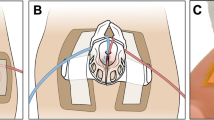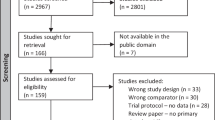Abstract
Objective
To determine if umbilical cord milking is detrimental in compromised term/near-term infants.
Study Design
A retrospective analysis of infants with abnormal cord gases (cord arterial or venous pH of ≤ 7.1 or base deficit > −12). We collected maternal risk factors, cord management, birth, and neonatal outcomes during hospitalization.
Result
We found 157 infants who met the criteria for abnormal cord gases. Thirty-six of those had umbilical cord milking at delivery. There was no significant difference in neonatal outcomes, but fewer infants in the cord milking group needed resuscitation (38 vs. 56%, p = 0.07) and ongoing respiratory support (19 vs. 31%, p = 0.16) compared to the immediate clamping group.
Conclusions
While not significant, infants who received cord milking at birth needed less resuscitation and ongoing respiratory support. This study suggests that umbilical cord milking appears to be a safe therapy when acidosis is present and when resuscitation is needed.
This is a preview of subscription content, access via your institution
Access options
Subscribe to this journal
Receive 12 print issues and online access
$259.00 per year
only $21.58 per issue
Buy this article
- Purchase on Springer Link
- Instant access to full article PDF
Prices may be subject to local taxes which are calculated during checkout
Similar content being viewed by others
References
Yao AC, Moinian M, Lind J. Distribution of blood between infant and placenta after birth. Lancet. 1969;2:871–73.
Farrar D, Airey R, Law GR, Tuffnell D, Cattle B, Duley L. Measuring placental transfusion for term births: weighing babies with cord intact. BJOG Int J Obstet Gynaecol. 2011;118:70–75.
Chaparro CM, Fornes R, Neufeld LM, Tena Alavez G, Eguia-Liz Cedillo R, Dewey KG. Early umbilical cord clamping contributes to elevated blood lead levels among infants with higher lead exposure. J Pediatr. 2007;151:506–12.
Lawton C, Acosta S, Watson N, Gonzales-Portillo C, Diamandis T, Tajiri N, et al. Enhancing endogenous stem cells in the newborn via delayed umbilical cord clamping. Neural Regen Res. 2015;10:1359–62.
Cashore WJ, Usher R. Hypovolemia resulting from a tight nuchal cord at birth. Pediatr Res. 1973;7:399.
Boluyt N, Bollen CW, Bos AP, Kok JH, Offringa M. Fluid resuscitation in neonatal and pediatric hypovolemic shock: a Dutch Pediatric Society evidence-based clinical practice guideline. Intens Care Med. 2006;32:995–1003.
Bhatt S, Polglase GR, Wallace EM, Te Pas AB, Hooper SB. Ventilation before umbilical cord clamping improves the physiological transition at birth. Front Pediatr. 2014;2:113.
Katheria A, Blank D, Rich W, Finer N. Umbilical cord milking improves transition in premature infants at birth. PLoS ONE. 2014;9:e94085.
Mercer J, Erickson-Owens D, Skovgaard R. Cardiac asystole at birth: Is hypovolemic shock the cause? Med Hypotheses. 2009;72:458–63.
Menticoglou S, Schneider C. Resuscitating the baby after shoulder dystocia. Case Rep Obstet Gynecol. 2016;2016:8674167.
Perez A, Ritter S, Brotschi B, Werner H, Caflisch J, Martin E, et al. Long-term neurodevelopmental outcome with hypoxic-ischemic encephalopathy. J Pediatr. 2013;163:454–59.
Martinez-Biarge M, Cheong JL, Diez-Sebastian J, Mercuri E, Dubowitz LM, Cowan FM. Risk factors for neonatal arterial ischemic stroke: the importance of the intrapartum period. J Pediatr. 2016;173:62–68.e61.
Nielsen LF, Schendel D, Grove J, Hvidtjorn D, Jacobsson B, Josiassen T, et al. Asphyxia-related risk factors and their timing in spastic cerebral palsy. BJOG Int J Obstet Gynaecol. 2008;115:1518–28.
Getahun D, Rhoads GG, Demissie K, Lu SE, Quinn VP, Fassett MJ, et al. In utero exposure to ischemic-hypoxic conditions and attention-deficit/hyperactivity disorder. Pediatrics. 2013;131:e53–61.
Getahun D, Fassett MJ, Peltier MR, Wing DA, Xiang AH, Chiu V, et al. Association of perinatal risk factors with autism spectrum disorder. Am J Perinatol. 2017;34:295–304.
Colozzi AE. Clamping of the umbilical cord; its effect on the placental transfusion. N Engl J Med. 1954;250:629–32.
Upadhyay A, Gothwal S, Parihar R, Garg A, Gupta A, Chawla D, et al. Effect of umbilical cord milking in term and near term infants: randomized control trial. Am J Obstet Gynecol. 2013;208:120.e121–26.
Erickson-Owens DA, Mercer JS, Oh W. Umbilical cord milking in term infants delivered by cesarean section: a randomized controlled trial. J Perinatol Off J Calif Perinat Assoc. 2012;32:580–84.
Salmeen KE, Jelin AC, Thiet MP. Perinatal neuroprotection. F1000prime Rep. 2014;6:6.
Takami T, Suganami Y, Sunohara D, Kondo A, Mizukaki N, Fujioka T, et al. Umbilical cord milking stabilizes cerebral oxygenation and perfusion in infants born before 29 weeks of gestation. J Pediatr. 2012;161:742–47.
Katheria AC, Leone TA, Woelkers D, Garey DM, Rich W, Finer NN. The effects of umbilical cord milking on hemodynamics and neonatal outcomes in premature neonates. J Pediatr. 2014;164:1045–50 e1041.
Sommers R, Stonestreet BS, Oh W, Laptook A, Yanowitz TD, Raker C, et al. Hemodynamic effects of delayed cord clamping in premature infants. Pediatrics. 2012;129:e667–72.
Thomas MR, Yoxall CW, Weeks AD, Duley L. Providing newborn resuscitation at the mother’s bedside: assessing the safety, usability and acceptability of a mobile trolley. BMC Pediatr. 2014;14:135.
Winter J, Kattwinkel J, Chisholm C, Blackman A, Wilson S, Fairchild K. Ventilation of preterm infants during delayed cord clamping (VentFirst): a pilot study of feasibility and safety. Am J Perinatol. 2017;34:111–16.
Katheria AC, Brown MK, Faksh A, Hassen KO, Rich W, Lazarus D, et al. Delayed cord clamping in newborns born at term at risk for resuscitation: a feasibility randomized clinical trial. J Pediatr. 2017;187:313–317.
Katheria A, Poeltler D, Durham J, Steen J, Rich W, Arnell K, et al. Neonatal resuscitation with an intact cord: a randomized clinical trial. J Pediatr. 2016;178:75–80.e73.
Katheria AC, Truong G, Cousins L, Oshiro B, Finer NN. Umbilical cord milking versus delayed cord clamping in preterm infants. Pediatrics. 2015;136:61–69.
Katheria AC, Lakshminrusimha S, Rabe H, McAdams R, Mercer JS. Placental transfusion: a review. J Perinatol. 2017;37:105–11.
Jaykka S. Capillary erection and the structural appearance of fetal and neonatl lungs. Acta Paediatr. 1958;47:484–500.
Shankaran S, Laptook AR, Ehrenkranz RA, Tyson JE, McDonald SA, Donovan EF, et al. Whole-body hypothermia for neonates with hypoxic–ischemic encephalopathy. N Engl J Med. 2005;353:1574–84.
Loureiro B, Martinez-Biarge M, Foti F, Papadaki M, Cowan FM, Wusthoff CJ. MRI patterns of brain injury and neurodevelopmental outcomes in neonates with severe anaemia at birth. Early Hum Dev. 2017;105:17–22.
Gardener H, Spiegelman D, Buka SL. Perinatal and neonatal risk factors for autism: a comprehensive meta-analysis. Pediatrics. 2011;128:344–55.
Martinello K, Hart AR, Yap S, Mitra S, Robertson NJ. Management and investigation of neonatal encephalopathy: 2017 update. Arch Dis Child Fetal Neonatal Ed. 2017;102:F346–58.
Bhatt S, Alison BJ, Wallace EM, Crossley KJ, Gill AW, Kluckow M, et al. Delaying cord clamping until ventilation onset improves cardiovascular function at birth in preterm lambs. J Physiol. 2013;591:2113–26.
Mercer JS, Erickson-Owens DA. Rethinking placental transfusion and cord clamping issues. J Perinat Neonatal Nurs. 2012;26:202–17. quiz 218–209
Committee on Obstetric Practice. Committee Opinion No. 684: delayed umbilical cord clamping after birth. Obstet Gynecol. 2017;129:e5–10.
Author contributions
Dr. Katheria and Dr. Mercer conceptualized and designed the study, drafted the initial manuscript, designed the data collection instruments, and coordinated and supervised data collection, and approved the final manuscript as submitted. MB, WR, KH, and BP acquired the data, carried out the initial analyses, reviewed and revised the manuscript, and approved the final manuscript as submitted. Dr. Harbert and Dr. Finer interpreted the results, reviewed and revised the final manuscript, and approved the final manuscript All authors approved the final manuscript as submitted and agree to be accountable for all aspects of the work.
Author information
Authors and Affiliations
Corresponding author
Ethics declarations
Conflict of interest
The authors declare that they have no conflict of interest.
Rights and permissions
About this article
Cite this article
Katheria, A., Mercer, J., Brown, M. et al. Umbilical cord milking at birth for term newborns with acidosis: neonatal outcomes. J Perinatol 38, 240–244 (2018). https://doi.org/10.1038/s41372-017-0011-9
Received:
Revised:
Accepted:
Published:
Issue Date:
DOI: https://doi.org/10.1038/s41372-017-0011-9
This article is cited by
-
Response to Dr. Kumar’s letter
Journal of Perinatology (2019)
-
Maternal bleeding complications following early versus delayed umbilical cord clamping in multiple pregnancies
BMC Pregnancy and Childbirth (2018)



